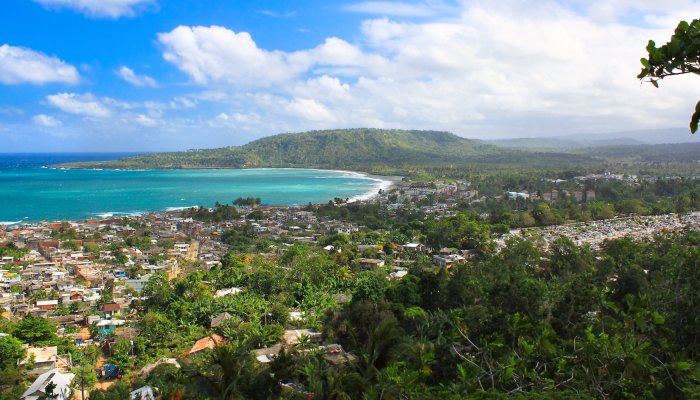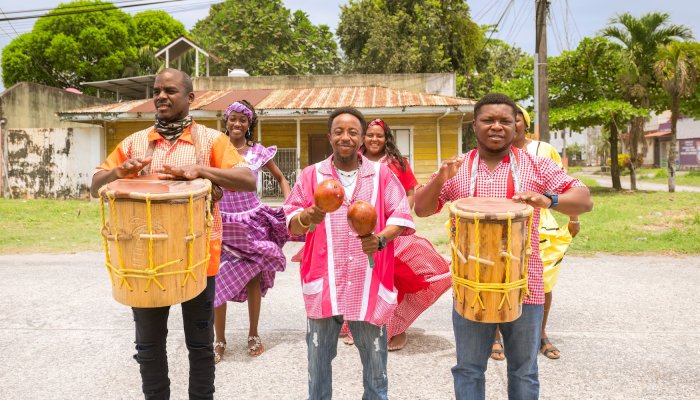How Coffee Shaped Cuba’s Landscape and Culture
In Cuba, coffee is not just a stimulating morning beverage but a product that has deep ties to the cultural and social fabric of the country. It has been cultivated in the island nation since the mid-18th century when French farmers fleeing Haiti established plantations. By the mid-1950s, Cuba was a major global supplier of coffee, exporting over 20,000 metric tons of coffee beans annually.
While Cuban coffee has lost much of its global market share, it remains an important part of the island’s agricultural heritage and is still prized by coffee connoisseurs for its unique flavor profile. The country’s coffee plantations have been recognized by UNESCO for their cultural heritage while the “cafecito” and social custom of the “colada” are integral to Cuban identity, both on the island and abroad. In this article, discover the history of coffee cultivation in Cuba and how it shaped the island’s landscape, as well as the impact of coffee drinking on Cuban culture.
A brief history of coffee in Cuba
Coffee has a storied history in Cuba, dating back to the mid-18th century when José Antonio Gelabert first introduced coffee plants to the island in 1748. However, it was the arrival of French colonists fleeing the Haitian Revolution in 1791 that really propelled Cuba’s coffee industry. These settlers brought with them more advanced coffee production techniques, which they implemented in eastern Cuba, establishing large coffee plantations that would come to define the region’s economy and culture throughout the 19th century.
Cuba’s coffee industry continued to thrive and expand throughout the early 20th century, reaching its peak in the mid-1950s when the country was exporting over 20,000 metric tons of coffee beans annually. The outbreak of World War I in 1914 dealt a blow to the industry as much of the coffee, at this time, was being exported to Europe.
The 1959 Cuban Revolution also brought challenges, as the breakup of large farms disincentivized coffee production. Quality suffered as producers stretched limited coffee supplies by mixing in roasted peas, a practice that has continued into the 21st Century.
The 1962 U.S. embargo on Cuban goods further damaged the industry, limiting access to one of the island nation’s biggest markets. This was followed by the fall of the Soviet Union, which triggered a crash in Cuban coffee production. While around 440,000 60 kilo bags of coffee were produced in 1989-90, this number plummeted to just 7,000 bags in 2007-08.
Recent years have seen a significant rebound to 100,000-130,000 bags annually, thanks to government investments that include providing better equipment and raising the price of coffee. These incentives are aimed at revitalizing this once- thriving industry that is so deeply intertwined with Cuba’s economy, culture, and history.
Today, coffee comprises only a tiny portion of Cuba’s overall trade but remains an important product, economically and culturally. Over 90% of the country’s coffee is now grown in the Sierra Maestra mountains, and all exports are handled by a single state-run company, Cubaexport, which sets prices paid to growers and processors.
UNESCO World Heritage listing
The unique agricultural landscape that emerged from Cuba’s coffee boom in the 19th and 20th centuries was so historically significant that, in the year 2000, UNESCO designated the “Archaeological Landscape of the First Coffee Plantations in the South-East of Cuba” a World Heritage Site. Located in the foothills of the Sierra Maestra mountains, the remnants of these early coffee farms bear witness to the ingenuity, perseverance, and often brutal conditions that shaped this industry.
Plantation owners, primarily of French and Haitian origin, exploited the challenging terrain and natural environment to cultivate coffee crops, devising irrigation systems and water management techniques to nurture the plants on the steep slopes. The blood and sweat of enslaved Africans fueled the growth and success of these plantations, with their backbreaking labor leaving an indelible mark on the land and its history.
The World Heritage listing includes 171 Cuban coffee plantations, which have been grouped into seven distinct areas. While some, like Cafetal Isabelica, have been restored to their original condition, others lie in picturesque ruins, slowly being reclaimed by nature.
Despite their varying states of preservation, the plantations share a common layout. The heart of each cafetal is the plantation owner’s stately residence, a unique blend of Basque architectural style adapted to suit the Caribbean climate. Radiating out from the main house, you find the slave quarters - simple wooden structures with thatched roofs of palm fronds and branches.
Other key structures included the secadero, a broad, flat terraced area paved with stone that was used for drying the harvested coffee beans in the sun. Additional buildings housed the equipment needed for milling the dried beans and roasting them, completing the journey from crop to cup.
Today, the architectural ruins, sprawling terraces, and overgrown trails that wind through the area are reminders of plantation life and the colonial coffee trade.
Collectively, they offer insight into the economic, social, and technological forces that defined this important chapter in the story of Cuba and the wider region.
Visiting Cafetal La Isabelica
One of the most popular Cuban coffee plantations to visit is Cafetal La Isabelica, which lies at an elevation of 1,150 meters near the rugged peaks of La Gran Piedra. It was established in the 19th century by French immigrants from Haiti and was abandoned following the abolishment of slavery in 1886.
At the heart of its expansive grounds are three large coffee-drying platforms, where the beans were spread out to dry before being processed. Towering over the drying area is a two-story stone mansion, which now serves as a museum, with the top floor designed as a replica of an original plantation house.
Step inside and you’ll discover artifacts, furnishings, and exhibits that bring the history of the plantation to life, including items once belonging to the slaves who toiled on the property. Period tools and antique coffee-processing machinery are on display, although the lack of signage means it’s best to explore with the help of a local guide.
How coffee has shaped Cuban culture
Not only has the production of coffee played an important role in Cuba’s history but the drinking of coffee is deeply ingrained in the local culture. At times, it has been available in abundance, while at others, it has been a scarce but necessary commodity that has found a way of bringing people together.
After the Cuban Revolution, food and coffee were strictly rationed, forcing Cubans to make the most of their limited coffee supply by brewing it in a concentrated, potent form. This resourcefulness led to the birth of the “cafecito” a strong, dark Cuban espresso served in small cups. It also gave rise to the social custom of the “colada”, where a small pot of coffee is shared among friends, family, and colleagues in a gesture of camaraderie.
Beyond just a beverage, Cuban coffee transformed into a social experience and a symbol of community. The lively, convivial atmosphere of Cuban coffeehouses, where people gather to sip “cafecitos”, chat, and connect, further solidified coffee’s central role in the nation’s social fabric.
Today, the bold, robust flavor of Cuban coffee has become synonymous with the country. For Cubans living abroad, it evokes fond memories of home and has become a tangible way to maintain their cultural identity.








